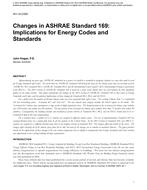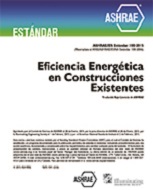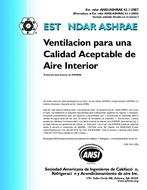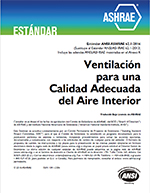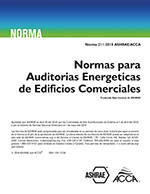Description
Approximately ten years ago, ASHRAE embarked on a process to establish a standard to categorize climates in a way that could be used for Energy Standards and Codes. The work done on ASHRAE Standard 169 formed the basis for the climate zones that are currently used in ASHRAE/IES Standard 90.1, ASHRAE Standard 90.2, and the International Code Council’s (ICC) International Energy Conservation Code (IECC). The 2013 version of ASHRAE Standard 169 is based on a more recent climate data set, and contains the first significant update to the initial version. This paper summarizes the changes in the 2013 version of ASHRAE Standard 169 as they relate to Energy Standards and Codes, and the potential implications of these changes for Standards 90.1, 90.2, and the IECC.
On a global level, the number of thermal climate zones has been expanded from eight to nine. The existing Climate Zone 1 is subdivided into two overarching zones: “extremely hot” and “very hot”. The new climate zone category includes the hottest regions in the world. The “extremely hot” climate zone encompasses a huge swath of highly populated areas. The humid portion of the extremely hot climate zone includes over 250 weather sites within over 60 countries. The dry portion of the extremely hot climate zone includes more than 75 weather sites within 20 countries. Consequently, the building envelope and mechanical systems criteria in Standards 90.1, 90.2, and the IECC would need to be re-evaluated in light of this new categorization.
On a national level, a number of U.S. counties are assigned to different climate zones. For ease of implementation, Standard 169 has assigned thermal zones on a county-wide basis to all the counties in the United States. In the 2013 version of Standard 169, over 300 U.S. counties are assigned to a different thermal zone than in the original version of Standard 169. The changes affect two-thirds of the states. The changes affect virtually all of the climate zones from hot to cold, but most of the changes are to counties in moderate climates. The paper provides details on the implications of these changes if the new county assignments were to simply be incorporated into Energy Standards and Codes without any adjustments to the existing building envelope requirements.
Citation: ASHRAE Papers CD: 2014 ASHRAE Winter Conference, New York, NY
Product Details
- Published:
- 2014
- Number of Pages:
- 8
- File Size:
- 1 file , 1 MB
- Product Code(s):
- D-NY-14-C055
